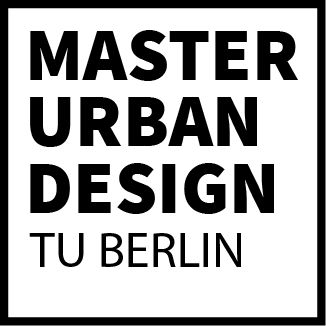 Urban Design Studio 2023/2024
Urban Design Studio 2023/2024
Tutors: Juliana Canedo, Christian Haid, Anke Hagemann
Chair: Habitat Unit
Students: Augustin Heinen, Bailey Gray, Lena Beckmann, Luyin Zhang, Zhixiao Li
Hemme Milch is a relatively large local dairy farm in Angermünde, a village 65km north of Berlin, with around 1000ha of land and approximately 700 dairy cattle.

At the core of Hemme Milch‘s ethos lies its circular economic model, wherein all necessary steps for the production of fresh milk and dairy products are done „in-house“. On-site resources are maximally utilised, and the biggest implication of this approach is large scale crop growth. With that, Hemme Milch manages to produce 90% of its dairy cows’ feed fully independently. Combined with large private processing infrastructure and storing capabilities, most major steps a litre of milk has to go through are handled in one location. This practice allows for a unique strategy in a heavily industrialised and global dairy market. However, Hemme will also face the same challenges as most of the Western agricultural industry will in the coming years.
 The escalating threat of extreme weather events, particularly prolonged summers and erratic rainfall patterns, poses a significant risk to crop yields essential for livestock feed. As the frequency and intensity of these climatic disturbances continues to rise, agricultural practices must adapt to mitigate potential disruptions to global supply chains, ensure the improved well-being of its livestock, and support an incline in general biodiversity. Moreover, the region of Brandenburg and surrounding Eastern states of Germany still suffer from a failed transitional period after the end of the German Democratic Republic (GDR). This missed opportunity lead to an unregulated property shift towards large investors and a rapid consolidation of ever grander farms that were highly profitable for the individual owner, yet alienated the local communities and actively hindered a fairly distributed, diverse, and generally productive hinterland.
The escalating threat of extreme weather events, particularly prolonged summers and erratic rainfall patterns, poses a significant risk to crop yields essential for livestock feed. As the frequency and intensity of these climatic disturbances continues to rise, agricultural practices must adapt to mitigate potential disruptions to global supply chains, ensure the improved well-being of its livestock, and support an incline in general biodiversity. Moreover, the region of Brandenburg and surrounding Eastern states of Germany still suffer from a failed transitional period after the end of the German Democratic Republic (GDR). This missed opportunity lead to an unregulated property shift towards large investors and a rapid consolidation of ever grander farms that were highly profitable for the individual owner, yet alienated the local communities and actively hindered a fairly distributed, diverse, and generally productive hinterland.
 The general concept of Hemme Milch however posses an integral part to the proposed solutions in this project. Where on-site circularity will run into issues in the near future, regional and closely knitted connections and flows can mediate the negative impacts whilst also starting to strengthen the region itself. In conjunction with several regulatory and social ideas already proven throughout recent history, this project considers itself not a fundamentally new plan but a precise and open ended reshuffle of existing and past elements on the levels of regulation, region and site.
The general concept of Hemme Milch however posses an integral part to the proposed solutions in this project. Where on-site circularity will run into issues in the near future, regional and closely knitted connections and flows can mediate the negative impacts whilst also starting to strengthen the region itself. In conjunction with several regulatory and social ideas already proven throughout recent history, this project considers itself not a fundamentally new plan but a precise and open ended reshuffle of existing and past elements on the levels of regulation, region and site. 



